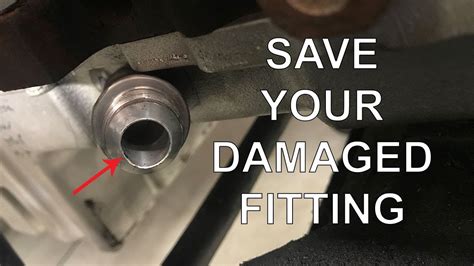How To Remove Stuck Oil Pan
Ronan Farrow
Apr 02, 2025 · 4 min read

Table of Contents
How to Remove a Stuck Oil Pan: A Comprehensive Guide
Changing your car's oil is a crucial maintenance task, but sometimes even this simple job can hit a snag. One of the most frustrating challenges is dealing with a stuck oil pan. This comprehensive guide will walk you through the process of removing a stubborn oil pan safely and efficiently.
Understanding Why Oil Pans Get Stuck
Before diving into the removal process, let's understand why oil pans get stuck in the first place. Several factors contribute to this common problem:
- Corrosion: Over time, rust and corrosion can build up between the oil pan and the engine block, creating a strong bond. This is especially common in older vehicles or those exposed to harsh weather conditions.
- Gasket sealant: The gasket sealant used during installation can harden and become incredibly difficult to break. This creates a vacuum-like seal, making removal challenging.
- Years of accumulated grime: Dirt, debris, and old oil can accumulate around the oil pan, further contributing to the bond and making it harder to separate.
Tools and Materials You'll Need
Before you begin, gather the necessary tools and materials. Having everything prepared beforehand will streamline the process and minimize frustration. You'll need:
- Jack and jack stands: Safely lifting your vehicle is paramount for access and safety.
- Wheel chocks: Essential for added security.
- Socket wrench set: For removing bolts and nuts.
- Oil pan gasket scraper: A specialized tool to carefully remove old gasket material.
- Penetrating oil: Like PB Blaster, to help loosen stubborn bolts and break the seal.
- Pry bar: Used cautiously to help separate the oil pan from the engine block (use with extreme care!).
- Gloves and safety glasses: Protecting yourself from oil, sharp edges, and potential spills is crucial.
- Drain pan: To collect any remaining oil.
- New oil pan gasket: Ready for installation once the old pan is removed.
- Torque wrench: To properly tighten the new oil pan bolts.
Step-by-Step Removal Process
Now, let's proceed with the removal process:
1. Preparation is Key:
- Safety First: Always start by placing your vehicle on jack stands, securely chocking the wheels, and disconnecting the battery's negative terminal.
- Drain the Oil: Completely drain the engine oil into a suitable drain pan. Allow ample time for the oil to drain completely.
2. Accessing the Oil Pan:
- Locate the Bolts: Identify all the bolts securing the oil pan to the engine block. Take note of their positions and sizes for easier reassembly.
3. Loosening the Bolts:
- Penetrating Oil: Generously apply penetrating oil to each bolt, allowing it to seep in for at least 15-20 minutes. This will significantly aid in loosening the bolts.
- Careful Removal: Use the appropriate socket wrench to carefully loosen the bolts. Do not force any bolt. If a bolt is proving incredibly stubborn, reapply penetrating oil and wait longer.
4. Separating the Oil Pan:
- Gently Pry (If Necessary): Once all bolts are removed, gently try to separate the oil pan from the engine block. Use a pry bar with extreme caution, inserting it between the pan and the block only at the edges. Avoid excessive force, as you could damage the engine block. A gentle rocking motion might be helpful.
- Persistent Resistance: If the oil pan remains stubbornly stuck, reapply penetrating oil and allow it to sit for another 15-20 minutes. Consider using a rubber mallet to gently tap around the perimeter of the oil pan to break the seal.
5. Cleaning Up:
- Remove Old Gasket: Once the oil pan is removed, carefully scrape off the old gasket material using an oil pan gasket scraper.
6. Installation of New Oil Pan and Gasket:
- Clean the Surface: Ensure both the engine block mating surface and the new oil pan are completely clean and free from debris before installing the new oil pan gasket and the oil pan.
- Apply New Gasket: Apply a thin and even layer of fresh gasket sealant (if required) according to the manufacturer's instructions.
- Reinstall the Oil Pan: Carefully install the new oil pan, ensuring it's properly seated.
- Tighten Bolts: Use a torque wrench to tighten the bolts to the manufacturer's specified torque setting. This prevents over-tightening and potential damage.
Post-Removal Checks
After successfully removing and reinstalling the oil pan, double-check for any leaks before starting the engine. Inspect the surrounding area for any signs of damage.
This guide provides a comprehensive approach to removing a stuck oil pan. Remember, patience and careful technique are key to successfully completing this task without causing damage. If you're unsure about any step, seeking professional assistance is always recommended.
Featured Posts
Also read the following articles
| Article Title | Date |
|---|---|
| How To Remove Glue From Car Window Tint | Apr 02, 2025 |
| How To Register Watchpat One | Apr 02, 2025 |
| How To Register A Boat Without Title In Nj | Apr 02, 2025 |
| How To Seal Windows For Summer | Apr 02, 2025 |
| How To Tell If Silverado 2500 Is Hd | Apr 02, 2025 |
Latest Posts
-
How To Write Yale Essays
Apr 03, 2025
-
How To Write Washu Supplemental Essay
Apr 03, 2025
-
How To Write Up A Quote For A Job
Apr 03, 2025
-
How To Write Sports Article
Apr 03, 2025
-
How To Write Letter Of Interest For Residency
Apr 03, 2025
Thank you for visiting our website which covers about How To Remove Stuck Oil Pan . We hope the information provided has been useful to you. Feel free to contact us if you have any questions or need further assistance. See you next time and don't miss to bookmark.
